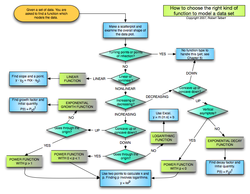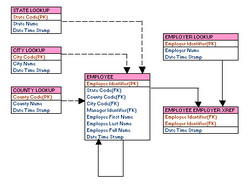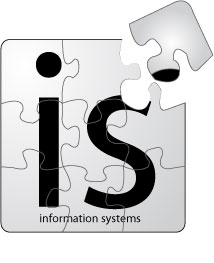
Given the exercise(s) about the previous topic “Data Modeling”, it was easy to somehow understand as a concept but when the actual problem was to translate the narrative case to a data model, that was when the confusions started. Maybe because basically I personally had just an ample of knowledge about the topic. But it was worth trying even though the trials were all wrong.
Knowing the need for this data model in the conceptualization of information system needed for an organization, it was worth the errors. It is in making mistakes where we learn, although the hard way.
One important lesson in creating data models, on creating drafts or trials, always use pencil. You’ll never know where and when you will be ‘out of the line’. After the data model is acceptable, translate the draft via Visio, it is very helpful having all the shapes for the entities and all. True, technology can ease the efforts in laying out the data model into organized output but the conceptualization and analysis are all based on the human effort which is crucial because this would identify the basis for the information system. Knowing this, it is important to put the right persons on the job.

The topic is somehow a nucleus of how an information system is designed. With tracing data modeling, entities are identified and the relationship between entities, processes and the interaction between them are identified.
Although I know there is a lot more to this topic than what we have discussed, the simple or should I say basic relationships were given namely association, aggregation, composition and generalization. I will give brief notes on what they are. Association is simply, with the key word associate, when entities are related and identified as the other. In aggregation, the entities are connected and related but one is independently connected from the other – that is, one can exist without the other. In composition, the relationship is like a part as opposed to whole. The part is basically dependent on the whole. And in generalization, this is like passing a characteristic or trait from generation to another. The child class inherits a similar trait from the parent or the super class.
Given these concepts on data modeling, a simple design for an information system can be made and from there, development and engineering can start. This way, breaking down to identifying the entities involved and the processes needed, it sure will be able to be custom-made for the organization being now “fit” and personalized and the desired results will be acquired.

After the session, there is now a clear understanding of the different classifications of information systems. The topic gave somehow boundaries between the different types of IS, although there are thin lines between and among them. These different systems are interconnectedly and interchangeably used by different levels of an organization - be it from the frontliners up to the executives and decision makers. That point was made clear this session.
Being a vital ingredient in organizational growth and success, it is just essential to put up an information system that is suitable. With this premise, not all organizations have the same needs regarding IS structure and design. With a successful IS placement, transactions of an organization will be of accuracy and precision, processes will be flowing with ease and decisions will be prompt and accurate.
The concept of information system planned and placed at the beginning of an organization's life cycle puts it on a competitive edge. Of course, this would entail cost if a complete IS will be placed. Compared to the cost, the returns would be more beneficial. With the continuous development of technology, different solutions are developed to different and unique IS concerns. Though with regards to cost, there are ready-made softwares up for grab offered at a more affordable price and some even offer free softwares. The problem posed by these pre-made softwares is the being 'fit' to the needs of the organization.
Only few organizations fully utilize the concept of information systems. But take this into account. These few organizations conquer the world in aspects of business, education, or whatever industry they may venture.



 RSS Feed
RSS Feed